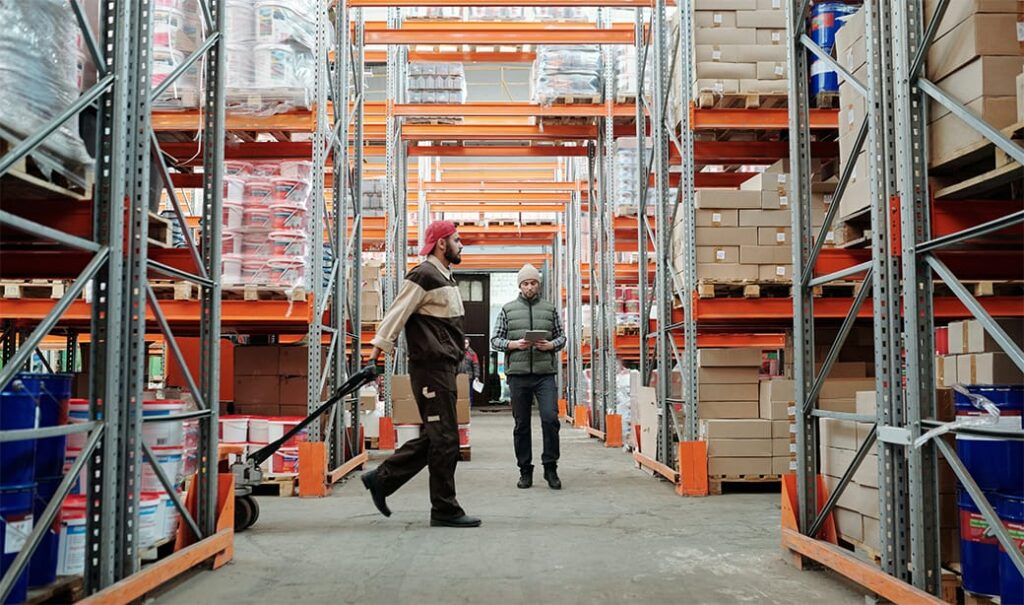Inventory management is one of the most important methods of corporate management, which needs strict control, in order not to be exposed to any theft or embezzlement, which requires periodic inventory in order to ensure that the stock is sound and there is no shortage or deficiency in the stores.
The inventory management process is also one of the most difficult operations faced by any organization (commercial or industrial) for several reasons:
The first is to determine the quantity to be stored and appropriate to the activity and movement of production, in order to avoid exposure to the two biggest problems
The stock is too little, the stock will run out quickly, and thus it will expose the organization to halting the movement of production and waiting for the arrival of additional shipments from the supplier and the inability to keep pace with the movement of demand in the market.
Excessive inventory will cost the organization more costs in terms of storage places and stagnation in stores for a long period that may affect the validity of its use in addition to wasting part of the capital in inappropriate places.
Secondly, the ability to choose the storage place carefully and be appropriate to the nature of the stored materials and to provide several means in it (protection – lighting – good ventilation).
Third, that the storage is carried out by appropriate scientific methods from the beginning of the receipt through the receipt, examination, coding, exchange and registration
And before we get to know about stock and ways to manage it, we must ask ourselves an important question at the beginning:
What is inventory management and warehouse management What is the difference between them ?!
Warehousing management:
It aims to control warehouses through storage methods and places and buildings called warehouses.
Approval and review of exchange bills through which the stock is disbursed from stores.
Receiving the incoming and checking it to make sure that it is not damaged and that it matches the agreed standards.
Disbursing goods from warehouses and conforming to the bills and making sure of the number spent.
The only person in charge of the stores is the storekeeper and those with him.
Inventory / stock management:
The main function of storage is to keep the items used in the industrial or commercial movement in suitable quantities and in suitable, safe and close places of consumption, and to provide means of transportation until they are needed.
Controlling inventory and observing the ratio of the minimum stock and the maximum limit.
Taking into account the exchange and receipt permits, and none of the stock is disbursed from the stores without the permissions, because that is a big responsibility.
Ensure the continuity of production through the inventory control process to avoid exposure to the state of raw materials running out.
The presence of a class card for each type separately, and proof of each movement for it in the books to follow the movement of each type.
What are the types of inventory:
Raw materials, which are the materials used in the manufacturing process, and most of the stocks of industrial companies.
Semi-finished materials (WIP & Work in Process). They are also found in industrial companies, as well as with commercial companies that distribute semi-finished materials as a final product.
Finished products (finished goods & FG). They are also found in industrial companies and commercial companies.
Spare parts for the maintenance of machines and materials not included in the production process such as (papers – inks – and others …)
What are the costs of inventory ?!
Supply costs be related to the wages of workers and employees who work to determine the required specifications, the appropriate quantity and the best supplier for the required item.
Stock-keeping costs are the costs of storing and guarding inventory, lighting, and renting space.
Cost of out-of-stock It is represented in the profits that are lost in the event of non-response and implementation of customer orders due to running out of stock in stores and waiting for the arrival of new stock from the supplier.
The cost of inefficiency in the production process ⇐ and these costs occur in the event that there are defects in manufacturing and not benefiting from the final product, so that loss is a cost of inefficiency in production for the organization.
How to manage inventory:
Inventory management is one of the main tasks that managers are concerned with in any industrial company, due to the importance of inventory and ensuring that it is not depleted
At the outset, competent and reliable persons are appointed to manage the stock.
Nothing is left or entered from the stock except after obtaining the approval of the permission for addition or after receiving the exchange permission.
The stock is examined too, to match the stock to the quantity, quality and characteristics indicated in the receipt.
Follow the periodic inventory system or continuous inventory in order to ensure that the inventory does not have any problems.
If the managers agree to follow the methods of continuous inventory, then the store is reviewed with every addition or exchange, and it is considered a tiring method, but it leads to actual and guaranteed results.
As for the periodic inventory system, the inventory is reviewed at the end of each period and to ensure that it matches the statements.
The stock in the companies differs from each other as the industrial companies own most of their stocks of raw materials, unlike commercial companies, for example, we find that their stocks are of goods and finished goods.
The FIFO method must also be used in order to avoid obsolescence of goods in stores.
Due to the importance of the large stock, whose cost may reach more than 50% of the expenses of the industrial establishment, many methods appeared to divide the inventory, but the most famous and most important of them was the industrial division method, which divided the stock into:
Direct industrial items: raw materials – semi-finished materials – finished products.
Indirect industrial items: maintenance materials – administrative and clerical materials.
Do large industrial enterprises need an accounts program to take stock?
Of course, any industrial establishment, regardless of its size, whether large, medium or small, needs a strong accounting program to ensure the inventory of the stores and the accounts of its customers and suppliers and to identify the quantities in the stores and to obtain warnings of the goods that have reached the minimum and move to restore the stock to its nature because the stock It is the lifeblood of any industrial establishment, which may lead to a halt in the entire movement of production if the stock runs out





